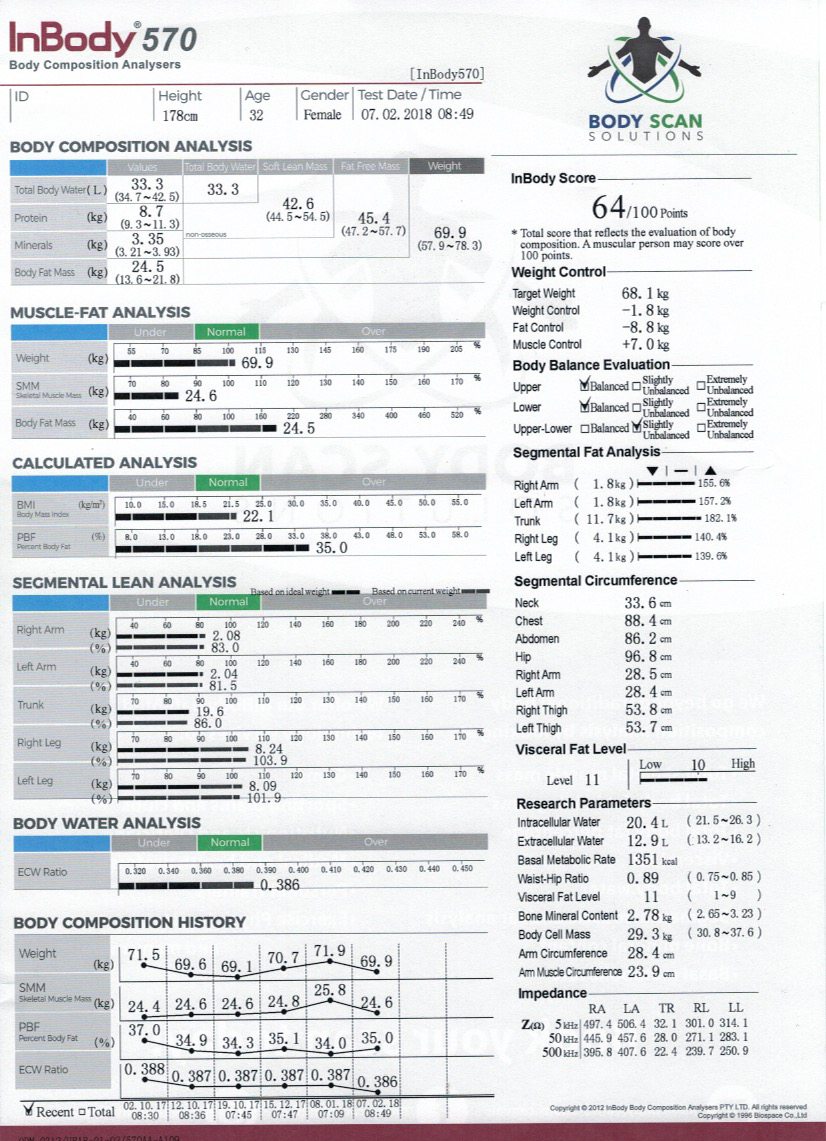The InBody 570 measures and analyses your body composition in terms of water, fat, protein, muscle and much more. The device can determine the weight of lean muscle tissue in each limb, the amount and percentage of body fat, bone mineral content, as well as a host of other valuable information.
Total Body Water (TBW): TBW is all the water in the body and is approximately 60% of your total weight. Ideally your TBW should be in the normal range according to the table.
Protein: The protein measurement reflects the amount of nitrogen in the cells. Protein consists of nitrogen and high nitrogen levels within the cells indicate good levels of muscle mass and health. A lack of protein implies a lack of muscle mass possibly indicating poor nutrition and malnourishment. Protein is directly related to intracellular water, which in turn suggests poor nutrition. Ideally your protein content should be within (or exceed) the normal range set out within the table.
Minerals: The InBody 570 analyses two groups of minerals: osseous minerals and non-osseous minerals. Osseous mineral is bone mineral where non-osseous minerals are those found in all other parts of the body. Mineral mass is closely related to soft lean mass. If you have more lean mass, the weight increases bone strength, which in turn increases the bone mineral.
Body Fat Mass: Body fat mass is found under the skin or around organs. It is shown as the amount of fat the body has in kilograms. When a person’s fat mass is higher than the standard range, he/she is diagnosed as being obese. Monitoring the amount of body fat mass an individual has is critical to their health.

